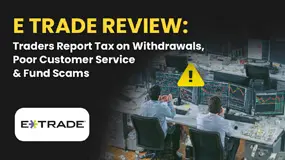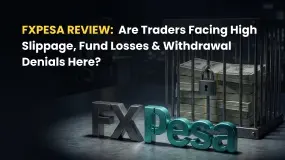简体中文
繁體中文
English
Pусский
日本語
ภาษาไทย
Tiếng Việt
Bahasa Indonesia
Español
हिन्दी
Filippiiniläinen
Français
Deutsch
Português
Türkçe
한국어
العربية
PayPal Users Warned About Sophisticated "No-Phish" Cyberattack
Abstract:PayPal issues an alert about a new 'no-phish' cyberattack targeting users directly through its platform. Learn how this advanced scam works and how to stay safe.

PayPal customers are being warned about a sophisticated hack that has experts on edge. This assault, known as “no-phish phishing,” is specifically designed to target weaknesses in digital payment networks while avoiding typical warning systems.
Unlike traditional phishing tactics, which frequently utilize poorly disguised emails or strange websites to lure users into disclosing critical information, the “no-phish” technique is significantly more sophisticated and covert. It integrates neatly with PayPal's UI, replicating routine operations and becoming nearly indistinguishable from actual transactions.
This worrying strategy ushers in a new era of cybercrime, challenging not just consumers but also the systems supposed to defend them.
How Does The “No-Phish” Attack Work?
The “no-phish” attack's essence is its ability to mix seamlessly with normal account actions. Rather than relying on external indications such as bogus emails, hackers use flaws in PayPal's infrastructure to obtain unauthorized access and carry out fraudulent actions.
Victims frequently state that their accounts seem normal, with no visible indicators of compromise. Hackers take advantage of this invisibility, performing transactions and obtaining sensitive data without triggering any immediate red flags.
The details of how thieves gained access to PayPal's system are still being investigated. However, what distinguishes this assault is its ability to evade standard detection systems. Traditional phishing scams frequently fail because they rely on errors such as misspelled domains or poorly crafted emails. The “no-phish” assault removes these flaws, making it far more effective and hazardous.
PayPal's Quick Action to Safeguard Users
PayPal responded decisively after discovering the problem. To avoid future assaults, the organization quickly changed impacted users' passwords and implemented additional security processes.
PayPal's spokesman reiterated their dedication to user safety, stating, “We are highly dedicated to securing our users' accounts. Our staff have worked extensively to resolve this issue and put in place extra protections to prevent repeat instances.”
PayPal has also provided detailed instructional tools to assist consumers in identifying and avoiding phishing attacks. These websites contain advice on how to verify the authenticity of messages and identify strange account behavior.
The Increasing Complexity of Cybercrime
Cybersecurity experts warn that the “no-phish” assault serves as a harsh reminder of the increasing complexity of online attacks. Scammers are getting better at using social engineering tactics and human psychology to trick even the most careful consumers.
Suzanne Sando, Senior Fraud and Security Analyst at Javelin Strategy & Research noted the importance of this development:
“The 'no-phish' phishing scam exemplifies how fraudsters evolve. They efficiently avoid the red signals that consumers are trained to recognize by imitating authorized operations. This makes it more difficult for customers to distinguish between genuine and fraudulent operations.”
This sophistication highlights the critical need for stronger cybersecurity safeguards and increased awareness among digital payment consumers.

How to Protect Yourself from “No-Phish” Attacks
In light of this new danger, cybersecurity experts advocate taking preemptive actions to protect your online accounts:
- Regularly Update Your Passwords: Keep your passwords updated on a regular basis. To decrease the danger of unwanted access, create strong, unique passwords for each account and update them on a regular basis.
- Enable two-factor authentication (2FA): Adding an extra layer of protection can make it substantially more difficult for attackers to access your account.
- Track Account Activity: Regularly examine your PayPal transactions for any unusual behavior.
- Be Wary of Communications: Never provide sensitive information until you are completely certain of the recipient's validity. Avoid clicking links in unsolicited emails or communications.
- Stay Informed: Use educational tools and resources supplied by platforms such as PayPal to remain up to date on the most recent security procedures.
What to Do If You Suspect an Attack?
If you believe your PayPal account has been hacked, you should take urgent action.
- Reset Password: Select a new, secure password that has not been used before.
- Keep Track of Your Account: Look for fraudulent transactions and notify PayPal's customer service.
- Contact PayPal Support: Please notify the company of any unusual behavior so that they can investigate and safeguard your account.
- Educate Yourself: Review PayPal's resources to learn more about phishing and how to protect yourself against it.
PayPal has also launched additional tools to assist users in recognizing the indicators of cyber fraud, as well as extensive instructions on proper security procedures.
Final Thought
The rise of the “no-phish” malware demonstrates cybercriminals' shifting strategies and the increased complexity of online fraud. It serves as a stark warning that even reputable services like PayPal are vulnerable to sophisticated assaults.
As digital payment systems continue to play an important part in our everyday lives, it is critical for both businesses and consumers to be cautious. PayPal's prompt response underscores the significance of proactive actions in protecting users. However, the responsibilities do not end there. We can resist the growing tide of cybercrime by remaining educated, implementing strong security practices, and cultivating a cybersecurity culture.
The future of online security is dependent on our capacity to adapt to these difficulties and collaborate to create a safer digital ecosystem.

Disclaimer:
The views in this article only represent the author's personal views, and do not constitute investment advice on this platform. This platform does not guarantee the accuracy, completeness and timeliness of the information in the article, and will not be liable for any loss caused by the use of or reliance on the information in the article.
Read more

E TRADE Review: Traders Report Tax on Withdrawals, Poor Customer Service & Fund Scams
Has your E Trade forex trading account been charged a withholding tax fee? Did your account get blocked because of multiple deposits? Did you have to constantly call the officials to unblock your account? Failed to open a premium savings account despite submitting multiple documents? Is fund transfer too much of a hassle at E Trade? Did you find the E Trade customer support service not helpful? In this E Trade review article, we have shared certain complaints. Take a look!

mBank Exposed: Top Reasons Why Customers are Giving Thumbs Down to This Bank
Do you find mBank services too slow or unresponsive? Do you find your account getting blocked? Failing to access your account online due to several systemic glitches? Can’t perform the transactions on the mBank app? Do you also witness inappropriate stop-level trade execution by the financial services provider? You are not alone! Frustrated by these unfortunate circumstances, many of its clients have shared negative mBank reviews online. In this article, we have shared some of the reviews. Read on!

FXPesa Review: Are Traders Facing High Slippage, Fund Losses & Withdrawal Denials?
Do FXPesa support officials fail to pick up your calls when you raise fund withdrawal requests with the broker? But are these officials always open to you regarding fund deposits? Do you frequently spot slippage and stop-loss order execution errors on the FXPesa login? These issues are increasingly becoming common with this forex broker. Consequently, many traders have expressed their dissatisfaction with the broker online. In this FXPesa Review article, we have shared some of these complaints. Take a look!

How a Fake Moomoo Ad Led to the “New Dream Voyage 5” Scam
A young engineer’s RM247,000 loss into a scam posing as Moomoo raises a chilling question: how many more are already trapped without realising it?
WikiFX Broker
Latest News
WikiFX's New Evaluation of ATM Capital LTD: Does its License Protect the Arab Investor?
How a Fake Moomoo Ad Led to the “New Dream Voyage 5” Scam
Is Axi Legit? A Data-Driven Analysis of Its Regulatory Standing and Trader Feedback
Trive Investigation: High Score, Hidden Risk - The Profit Paradox
In-Depth Uniglobe Markets Commission Fees and Spreads Analysis – What Traders Should Really Know
FXPesa Review: Are Traders Facing High Slippage, Fund Losses & Withdrawal Denials?
CMC Markets Australia Revenue Surges 34%, But High-Net-Worth Clients Face Tax Phishing Threat
Bessent believes there won't be a recession in 2026 but says some sectors are challenged
Young Singaporean Trader Grew USD 52 into a USD 107,700 Portfolio
Is GGCC Legit? A Data-Driven Analysis for Experienced Traders
Currency Calculator



